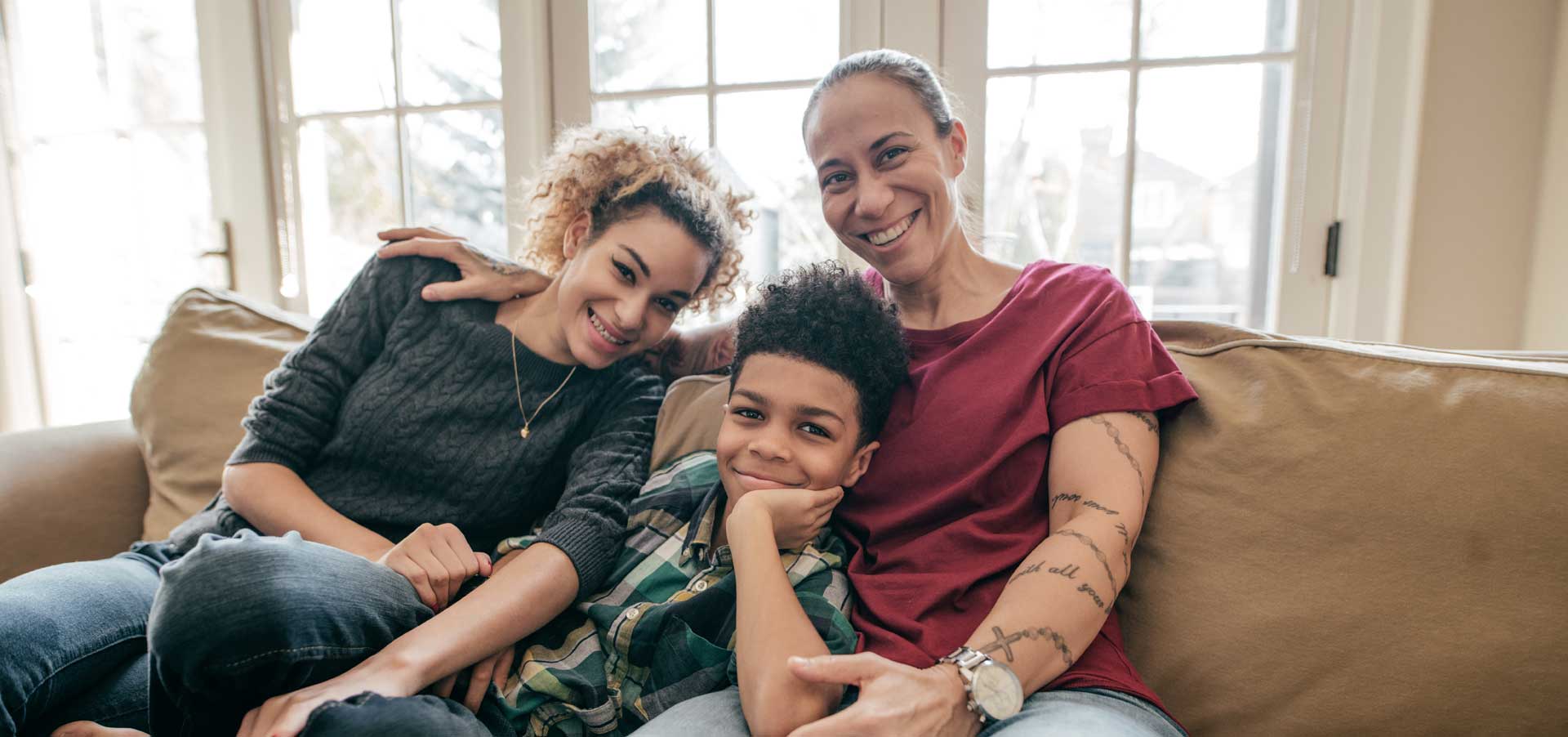Tips to Teach Children about Different Types of Families

Today’s post was written by Bright Horizons eCDA Facilitator, Kelly Fenderson-Gonzales.
I walked into my child’s kindergarten prep classroom where my daughter, Callie, and her friend, Mason, both 4 years old, were engaged in dramatic play. Soon after, I heard, “Why don’t you have a dad?” I panicked. As an LGBTQ family, I knew this day would come, but I wasn’t prepared for it at 4 years old. In her soft voice, my child confidently replied, “Because I don’t. I have two moms.” Mason shrugged his shoulders, said, “Okay.” And they continued with their cooking.
It was as simple as that. No additional questions. No challenges. Mason was just curious, and Callie answered at her best 4-year-old level. I have no idea if Mason went home with more questions or if he’s ever questioned it again. But I took this as a prime opportunity to talk with my own children about family structures. For us, the conversation came up naturally as a result of Callie and Mason’s interaction, but for others, it might not come up organically. Here are some ways to teach your child about types of families that might be different from your own.
4 Ways to Teach Kids about Different Family Structures
- Start the conversation by reading children’s books illustrating different family structures. On this particular day, I used the book “Who’s in a Family?” by Robert Skutch, featuring all types of families – single parents, adopted families, same-sex families, children raised by grandparents, parents with fur babies only, even animal families. There are many children’s books about family structures. Regardless of the ones you choose, it is a great way to begin the conversation, especially if you are feeling uncomfortable by the discussion.
- Allow (and encourage) children to ask questions. Often, children’s questions are for informational purposes only. If a child’s family has a mom, dad, and siblings, that is what they know as a family unit. When a child comes across a family with a different structure, whether in a book or in life, it’s natural to be curious about the differences. After reading a book, or meeting a child with a different family structure, encourage your child by simply asking, “What questions do you have?” Or, “What are you thinking about now that we’ve learned this?” You could even initiate by exclaiming, “How interesting – their family has a child, mom, and grandma in their house! What do you think of that?”
- Be honest. This brings me back to Mason’s question, “Why don’t you have a dad?” All he needed to fulfill his curiosity was, “Because I don’t. I have two moms.” A simple question, needing a simple answer. Responding to children’s questions with straightforwardness matters. After all, children aren’t always looking for deep responses, just honest, developmentally-appropriate answers.
- Bring conversations about family structures back to the heart of a family. It might look different for each person, but at the end of the day, a family consists of people who love and care for you.
Surprisingly, when it comes to my own family structure consisting of two moms and two children, now 7 and 5, this one moment three years ago is the only of its kind. The one thing I do often hear from my kids? “I wish we could be one of those families that get to live with our grandparents, too!”